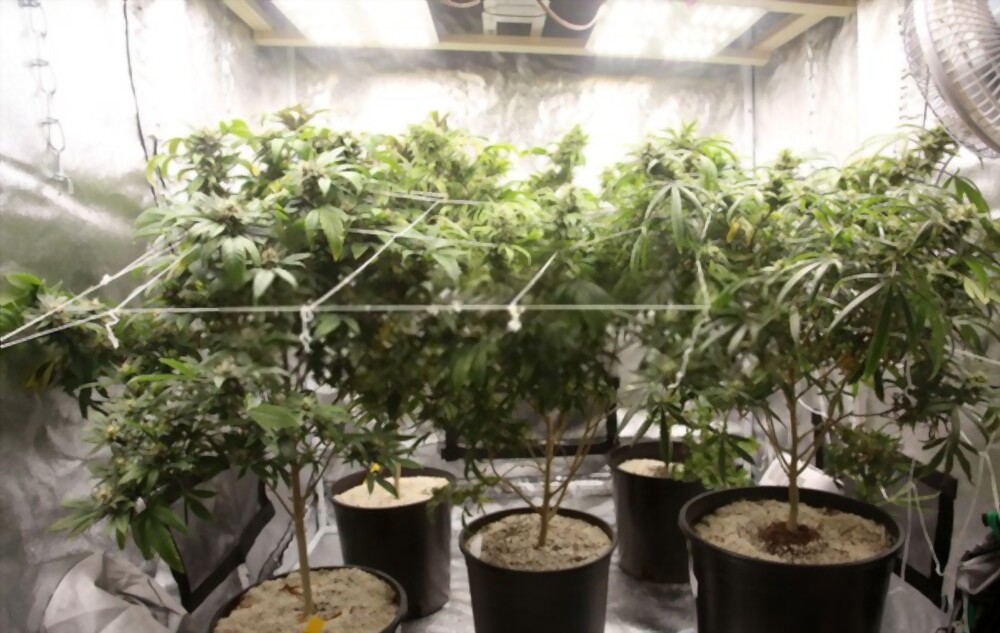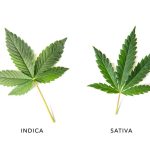🔥 Website for Sale - Contact Us
Are you tired of mediocre harvests and looking for a proven way to boost your cannabis yields without causing unnecessary stress to your plants? Today, we’re going to uncover the secret behind efficient Low Stress Training (LST) cannabis cultivation.
This insider’s guide takes a look at the basics and science behind Low Stress Training, and how to adapt it in your growing environments. Let’s dive into the world of Low Stress Training and unlock the full potential of your cannabis plants!
I. The Basics of Low Stress Training (LST)
A. What is LST and why it’s important for cannabis growers
Low Stress Training, or LST for short, is a gentle plant training technique that involves manipulating the growth of your cannabis plants by bending and securing their branches. The idea behind LST is to create an even canopy, which allows each plant to receive optimal light exposure.
But why is LST such a big deal for cannabis growers?
Improved Light Distribution: By creating an even canopy, LST ensures that all your plant’s branches get equal access to light. This helps to prevent taller branches from shading lower ones, leading to an overall increase in photosynthesis and growth.
Increased Yield: With better light exposure comes better growth, and that means a more bountiful harvest. LST can significantly boost your yield, as it encourages the development of multiple colas or bud sites, rather than just one central cola.
Reduced Plant Stress: Unlike other high-stress training techniques, LST is gentle on your plants. It doesn’t involve cutting or breaking stems, which means your plants are less likely to become stressed or vulnerable to disease and pests.
Improved Air Circulation: A well-trained LST canopy promotes better airflow around your plants, reducing the risk of mold and other issues associated with high humidity and stagnant air.
In short, LST is a game-changer for cannabis growers looking to enhance their cultivation process, save space, and increase their yields – all without causing undue stress to their plants.
B. The difference between LST and other training techniques
As a cannabis grower, you might have heard about various training techniques to optimize your plants’ growth and yield. While all these methods aim to improve your cannabis garden’s performance, it’s crucial to understand the differences between Low Stress Training (LST) and other popular techniques. Here’s a breakdown of how LST compares to some of the other commonly used methods:
High Stress Training (HST): High Stress Training involves techniques that cause significant stress to your plants, such as topping and FIMing. Topping involves cutting the main stem of your plant, which encourages the growth of multiple colas. FIMing (short for “F***, I missed!”) is similar to topping but involves removing a smaller portion of the growth tip. While these techniques can boost yield, they also cause considerable stress to your plants, potentially slowing growth and increasing the risk of health issues.
Screen of Green method (ScrOG): The ScrOG method utilizes a horizontal screen or netting placed above the plants to guide their growth. Growers weave the branches through the screen, promoting an even canopy and optimal light exposure. While ScrOG and LST share the goal of creating an even canopy, ScrOG relies on additional equipment and can be more labor-intensive than LST.
Sea of Green method (SOG): This technique involves growing many small plants close together to form a dense, uniform canopy. The plants are kept short and are forced to flower early, resulting in a quicker harvest. While SOG can be effective for maximizing yield in a limited space, it doesn’t involve branch manipulation or individual plant training associated with LST.
Super Cropping: Super cropping is a high-stress training technique that involves partially breaking or crushing the plant’s branches to create a knuckle. This stimulates the plant’s natural healing response, which can result in stronger, more robust branches and increased bud production. While super cropping can be highly effective, it’s also more stressful for your plants compared to LST.
In summary, LST stands out from other training techniques due to its gentle, low-stress approach to plant manipulation. By avoiding the cuts, breaks, and equipment associated with other methods, LST allows you to optimize your cannabis garden’s growth and yield while minimizing stress and potential damage to your plants.
C. The science behind LST and how it works for cannabis plants
LST takes advantage of two key aspects of plant growth: the plant’s natural response to stress, and its ability to adapt to light exposure.
Hormonal response to stress: When you gently bend and secure your cannabis plant’s branches, you’re causing mild stress to the plant. Stress triggers the release of a hormone called auxin, which plays a crucial role in plant development. As auxin flows from the plant’s tip to its lower branches, it stimulates lateral growth and helps encourage the formation of multiple colas.
Apical dominance: In most plants, including cannabis, the main stem or “apical meristem” is dominant, meaning it receives more growth hormones than the lower branches. This dominance is what leads to the classic “Christmas tree” shape of many plants. LST disrupts apical dominance by encouraging the growth of side branches, resulting in a bushier, more horizontal growth pattern. This allows for better light penetration and an overall more efficient use of resources.
Resource allocation: LST also helps to balance the distribution of resources within the plant. By spreading out the growth points, LST ensures that energy and nutrients are allocated more evenly across the plant. This leads to a more uniform and abundant production of flowers and a higher overall yield.
In essence, the science behind LST is all about leveraging your cannabis plant’s natural responses to stress and light exposure. By gently manipulating your plants and guiding their growth, you can create an ideal growing environment that promotes healthy, robust plants and maximizes your cannabis garden’s yield potential.
II. Getting Started with Low Stress Training
A. The best time to begin LST in your cannabis plants’ growth cycle
Timing is everything when it comes to implementing Low Stress Training successfully. Starting LST too early or too late in your plant’s growth cycle can stunt growth. So, when’s the best time to start LST?
Early Vegetative Stage: The ideal time to start LST is during the early vegetative stage, typically when your cannabis plant has developed 4 to 6 nodes or sets of true leaves. At this point, the plant is well-established and has enough foliage to benefit from the improved light exposure that LST provides.
Growth Rate: If your plant is growing quickly, you may need to start LST earlier to manage its size and maintain an even canopy.
Plant Health: It’s crucial to ensure that your plants are healthy before starting LST to avoid overstressing. If your plants are struggling with pests, diseases, or nutrient deficiencies, it’s best to address those issues first before adding the stress of LST.
Regular Adjustments: As your plants continue to grow, you’ll need to make regular adjustments to your LST setup. This may involve repositioning ties, adding new anchor points, or gently bending new growth to maintain the desired canopy shape.
In summary, the best time to begin LST is during the early vegetative stage when your cannabis plant has developed 4 to 6 nodes. Starting LST at this stage ensures that your plants are well-established and flexible enough for easy manipulation. Always monitor your plants’ growth and health, making adjustments as necessary to maximize the benefits of LST throughout the vegetative stage.
B. Essential tools and equipment for successful LST implementation
Here’s a list of essential tools and equipment to get started:
Soft Plant Ties: You’ll need something to secure your cannabis plants’ branches in their new positions gently. Soft plant ties, such as coated wire or fabric strips, work well because they’re flexible and gentle on your plants. Avoid using materials that can cut into or damage the stems, like zip ties or bare wire.
Plant Stakes or Hooks: To anchor your plant ties, you’ll need some form of plant stakes or hooks. These can be simple bamboo stakes, plastic plant stakes, or even hooks that can be attached to your grow container’s rim. Choose a stake or hook that’s sturdy enough to hold your plants in place without causing damage.
Pruning Shears: Although LST doesn’t typically involve cutting your plants, having a pair of clean, sharp pruning shears on hand is helpful for removing any dead or damaged leaves and making any necessary adjustments to your plants’ growth.
Plant Labels: As you train your cannabis plants, it’s essential to keep track of their progress. Using plant labels can help you remember which plants have been trained and when adjustments were made. This can be especially helpful if you’re growing multiple strains or experimenting with different LST techniques.
Patience and a Gentle Touch: Last but not least, the most crucial “tool” for successful LST is your own patience and a gentle touch. Remember, the goal of LST is to minimize stress on your plants while encouraging optimal growth. Take your time, be gentle with your plants, and adjust your LST techniques as needed throughout the growth cycle.
C. Step-by-step guide to starting LST in your cannabis garden
Follow this step-by-step guide to start Low Stress Training in your grow tent.
Assess your plants: Before starting LST, make sure your cannabis plants are healthy and at the appropriate stage of growth. Ideally, they should have 4 to 6 nodes or sets of true leaves, and no signs of pests, disease, or nutrient deficiencies.
Choose the branches to train: Identify the primary branches that will form the basis of your even canopy. Focus on the branches that are receiving less light or are growing taller than the others. Don’t forget to consider the future growth of your plants and how the branches may develop as they continue to grow.
Gently bend the branches: Carefully and slowly bend the selected branches away from the center of the plant and towards the edges of your grow space. The goal is to create a more horizontal growth pattern that maximizes light exposure. Be gentle and patient, as applying too much force too quickly can cause the branches to snap.
Secure the branches: Using soft plant ties, secure the bent branches to your plant stakes or hooks. Ensure the ties are tight enough to hold the branches in place but not so tight that they cut into or damage the stems. Remember to leave some slack for future growth and adjustments.
Monitor and adjust: As your cannabis plants continue to grow, keep an eye on their progress and make adjustments to your LST setup as needed. This may involve repositioning ties, adding new anchor points, or gently bending new growth to maintain the desired canopy shape.
Maintain plant health: While practicing LST, it’s essential to continue monitoring your plants for any signs of stress, pests, or disease. Address any issues promptly to ensure your plants remain healthy and thriving throughout the LST process.
Transition to flowering: Once your plants have reached the desired size and shape, and you’re ready to transition to the flowering stage, maintain the LST setup but minimize any significant adjustments. This allows your plants to focus their energy on flower production and helps prevent unnecessary stress during this critical phase.
With patience, a gentle touch, and regular monitoring, LST can help you create an even canopy, and improve light exposure.
III. Advanced Low Stress Training Techniques
A. Topping and FIMing: Additional training methods to combine with LST
While Low Stress Training on its own can significantly benefit your cannabis garden, combining LST with other training methods can further optimize your plants’ growth and yield potential. Two popular techniques that can be used in conjunction with LST are topping and FIMing. Here’s a breakdown of these methods and how they can complement your LST efforts:
Topping: Topping involves cutting the main stem of your cannabis plant above a node, usually after the plant has developed 4 to 6 nodes. This encourages the growth of two new main stems, increasing the number of colas and promoting a bushier plant structure. Topping can be done multiple times, further multiplying the number of main stems and bud sites. When combined with LST, topping can help create an even more balanced canopy and maximize light exposure to all parts of your plants.
To top your cannabis plants, follow these steps:
- Wait until your plant has developed at least 4 to 6 nodes.
- Using clean, sharp pruning shears or scissors, make a clean cut above the node, leaving a small portion of the stem intact.
- Monitor the plant’s response to topping and adjust your LST strategy accordingly, gently bending and securing the new growth to maintain an even canopy.
FIMing: FIMing (short for “F***, I missed!”) is similar to topping but involves removing only a small portion of the growth tip, approximately 75% to 80% of the new growth. This technique can result in the development of 3 to 4 new main stems, potentially leading to a higher yield than topping alone. FIMing, when combined with LST, can further enhance the evenness of your canopy and improve light penetration.
To FIM your cannabis plants, follow these steps:
- Wait until your plant has developed at least 4 to 6 nodes.
- Using clean, sharp pruning shears or scissors, carefully remove about 75% to 80% of the new growth at the tip of the main stem, leaving a small portion intact.
- Monitor the plant’s response to FIMing and adjust your LST strategy accordingly, gently bending and securing the new growth to maintain an even canopy.
Keep in mind that both topping and FIMing are high-stress training techniques, so it’s essential to ensure your plants are healthy and well-established before implementing these methods. By combining LST with topping and FIMing, you can create a robust, high-yielding cannabis garden that makes the most of your available light and space.
B. Super cropping: Enhancing the effectiveness of LST
Super cropping is another training technique that can be used in conjunction with Low Stress Training to further optimize your cannabis plant’s growth and yield potential. Super cropping involves carefully bending and slightly damaging the inner tissue of the plant’s stem, promoting a stronger, thicker stem and increased nutrient flow. When combined with LST, super cropping can help create an even more robust and productive cannabis garden.
To super crop your cannabis plants, follow these steps:
Choose the branches: Identify the branches that could benefit from super cropping, particularly those that are growing taller than the rest or are not receiving adequate light.
Soften the stem: Using your thumb and index finger, gently squeeze and roll the stem to soften the inner tissue. Be careful not to damage the outer layer or break the stem completely.
Bend the branch: Once the stem is softened, carefully bend the branch at a 90-degree angle. You may hear a slight snap or crunch as the inner tissue breaks, but ensure that the outer layer remains intact.
Secure the branch: Use soft plant ties to secure the super cropped branch in its new position. This will help maintain the desired angle and encourage the branch to heal and grow stronger.
Monitor and adjust: Keep an eye on your plants as they recover from super cropping and adjust your LST strategy accordingly. The bent branches should start to heal and grow thicker and more robust within a week or two.
Combine with LST: Integrate super cropped branches into your existing LST setup, ensuring they receive adequate light and maintain an even canopy. This will help maximize the benefits of both training techniques.
It’s essential to remember that super cropping is a high-stress training technique and should only be performed on healthy, well-established plants. When combined with Low Stress Training, super cropping can help create a more resilient and productive cannabis garden that takes full advantage of your available light and space.
C. Lollipop pruning: A perfect companion for LST to increase airflow and light penetration
Lollipop pruning is a strategic method of removing lower growth from your cannabis plants to improve airflow, light penetration, and overall plant health. This technique gets its name from the resulting plant structure, which resembles a lollipop with a bare stem and dense foliage at the top. When used in conjunction with Low Stress Training, lollipop pruning can help create an even more efficient and productive harvest.
Steps for lollipop pruning cannabis plants:
Assess your plants: Before starting to lollipop, ensure the plants are healthy and well-established. It’s best to perform this technique during the vegetative stage.
Identify lower growth: Locate the lower branches and foliage that receive little to no light due to shading from the upper canopy. These areas are prime candidates for lollipop pruning, as they contribute little to the overall yield and can drain valuable resources from the plant.
Remove lower growth: Using clean, sharp pruning shears, carefully remove the identified lower branches and foliage. Be mindful not to remove too much growth at once, as this can cause undue stress to your plants. A general guideline is to remove approximately the lowest third of your plant’s growth.
Combine with LST: Integrate lollipop pruning into your existing LST setup, adjusting plant ties and positions as needed to maintain an even canopy. This will help maximize light exposure and airflow to the remaining growth, encouraging a more productive and efficient garden.
Lollipop pruning is an excellent companion technique for Low Stress Training, as both methods aim to create a more productive cannabis garden. By removing lower growth that doesn’t contribute to overall yield and focusing resources on the upper canopy, lollipop pruning can help enhance the effectiveness of your LST efforts. Remember to monitor your plant’s health and adjust your training techniques as needed to achieve the best possible results.
III. Advanced Low Stress Training Techniques
LST for various cannabis strains: Indica, Sativa, and hybrids
Low Stress Training can be an effective technique for optimizing growth and yield potential across various cannabis strains, including Indica, Sativa, and hybrid varieties. Each strain type has its own growth patterns and characteristics, so it’s essential to adapt your LST approach to suit the specific needs of your plants. Here’s a brief overview of how to apply LST to different cannabis strains:
Indica strains: Indica plants are known for their shorter, bushier growth patterns, with broader leaves and a more compact structure. This makes them naturally well-suited to LST techniques, as they can more easily adapt to a horizontal growth pattern. When implementing LST on Indica strains, focus on gently bending the main branches outward to create a more even canopy, maximizing light exposure and promoting an overall bushier growth pattern.
Sativa strains: Sativa plants typically grow taller and more slender, with longer internodal spacing and narrower leaves. This growth pattern can make them more challenging to train using LST, but it’s still possible with some modifications. When working with Sativa strains, start LST earlier in the vegetative stage to encourage a more horizontal growth pattern. You may need to apply additional training techniques, such as topping or super cropping, to control the height and maintain an even canopy.
Hybrid strains: Hybrid plants can exhibit a wide range of growth patterns, depending on their specific genetic makeup. When implementing LST on hybrid strains, take the time to assess the plant’s growth characteristics and adapt your approach accordingly. You may need to employ a combination of training techniques to achieve the desired results, depending on whether the plant exhibits more Indica or Sativa traits.
Regardless of the strain you’re growing, the key to successful Low Stress Training is patience, adaptability, and careful monitoring.
V. Troubleshooting Common LST Challenges
While Low Stress Training can be a highly effective technique for optimizing your cannabis growth, it’s not without its challenges. Here are some common LST issues and how to troubleshoot them:
Accidental stem breakage: When bending branches during LST, it’s possible to apply too much pressure and accidentally break a stem. If this occurs, don’t panic. Repair the break by securing the damaged area with plant tape or a splint, and give the plant time to recover. In the future, be more gentle when bending branches and soften the stem before bending to reduce the risk of breakage.
Uneven canopy: If your canopy is still uneven after implementing LST, you may need to reevaluate your training strategy. Check for any branches that are growing taller or receiving less light, and adjust their positioning accordingly. You may also need to employ additional training techniques, such as topping or super cropping, to help control the height and maintain an even canopy.
Signs of stress: If your plants are showing signs of stress after implementing LST, such as wilting, discoloration, or slowed growth, it’s crucial to address the issue promptly. Ensure your plants are receiving proper care in terms of watering, nutrients, and light, and adjust your LST strategy to be more gentle.
Overtraining: While LST can help improve your cannabis garden’s efficiency, overtraining your plants can lead to unnecessary stress and diminished yields. Be mindful of the number of adjustments and training techniques you’re applying, and give your plants time to recover between each change. Remember that less can sometimes be more when it comes to plant training.
Pest or disease issues: LST can sometimes make your plants more susceptible to pests and diseases due to the increased foliage density and reduced airflow. Monitor your plants closely for any signs of infestation or illness, and address issues promptly to prevent them from spreading throughout your garden.
By being aware of these common LST challenges and knowing how to troubleshoot them, you can more effectively optimize your cannabis garden’s growth. Patience, careful monitoring, and adaptability are essential for successful Low Stress Training, so take the time to understand your plant’s unique needs and adjust your approach as needed.
VI. Common Questions
A. When to start low-stress training?
The best time to begin Low Stress Training on your cannabis plants is during the vegetative stage. Starting LST too early or too late can be less effective and even harmful to your plants.
Typically, you should begin LST when your plants have developed at least four to six nodes, or sets of leaves. At this point, your plants should be sturdy enough to handle bending and securing without causing undue stress or damage. Starting LST earlier than this can result in weaker stems and stunted growth, while starting later can limit the effectiveness of the technique.
It’s also important to ensure that your plants are healthy and well-established before implementing LST. This means ensuring they have adequate water, nutrients, and light, and are free from any pests or diseases. Stressed or unhealthy plants may not respond well to LST, and may require additional care and attention before implementing any training techniques.
Conclusion: Unlocking Your Cannabis Garden’s Full Potential with LST
Low Stress Training is a powerful technique that can help you unlock the full potential of your cannabis garden, allowing for more efficient use of space, increased light penetration, and improved airflow. By carefully bending and securing your plants’ branches, you can create an even canopy that maximizes light exposure and promotes higher yields.
While LST can be highly effective on its own, combining it with other training techniques, such as topping, FIMing, super cropping, and lollipop pruning, can further enhance your garden’s overall productivity. Each cannabis strain may require a slightly different approach, so it’s crucial to be patient, adaptable, and observant as you implement LST and other training methods.
As with any gardening technique, LST comes with its own set of challenges, from accidental stem breakage to uneven canopies. By staying vigilant and addressing issues promptly, you can overcome these hurdles and create a thriving, high-yielding cannabis garden that makes the most of your available resources.
In conclusion, Low Stress Training is an invaluable tool for cannabis growers looking to optimize their garden’s efficiency and potential.





